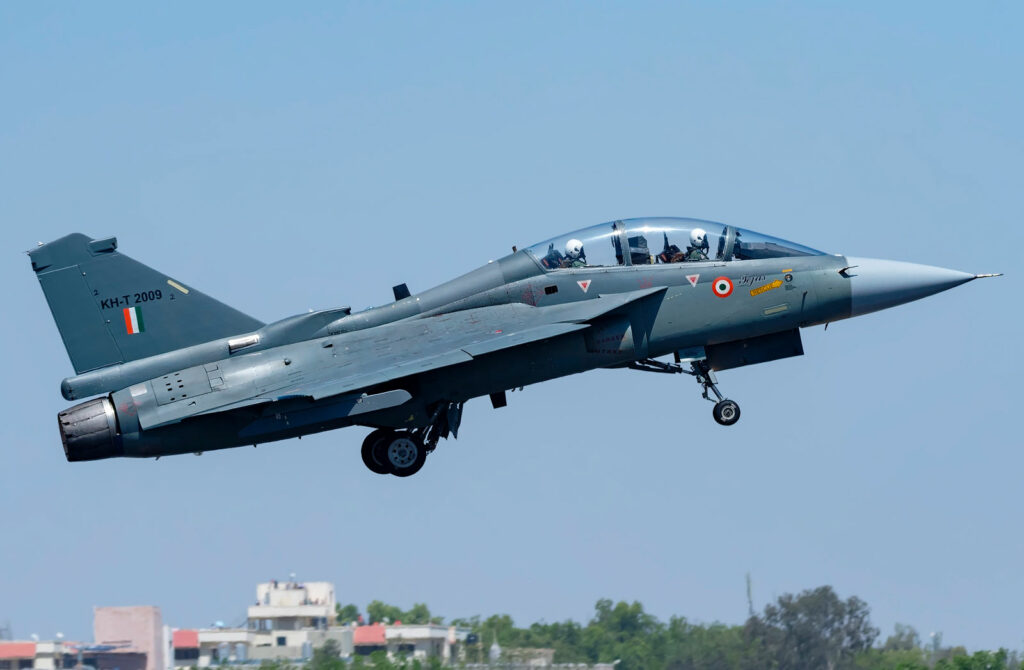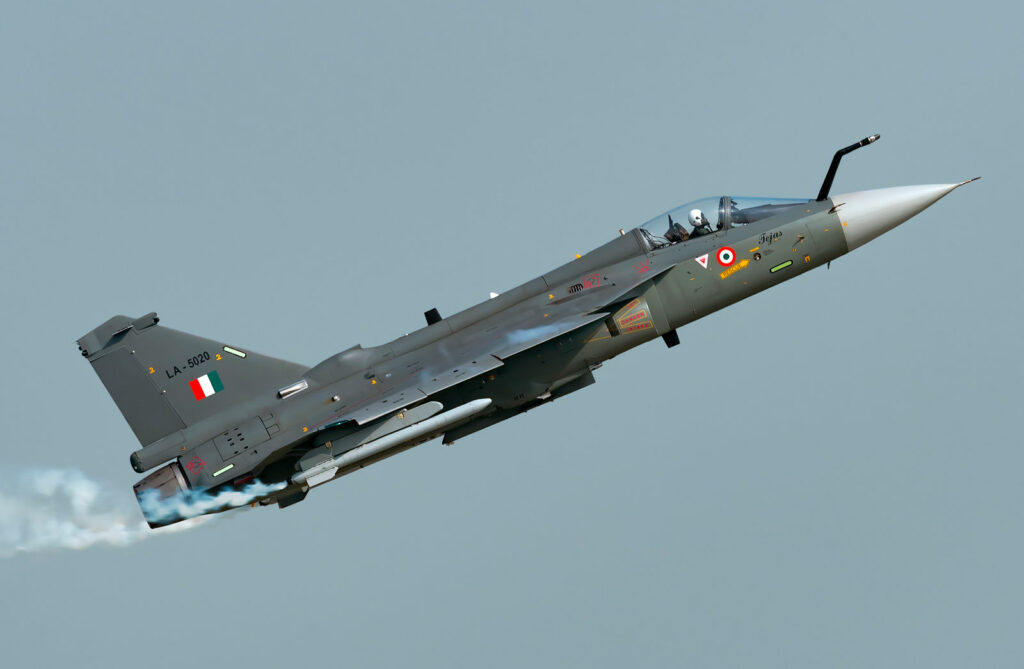
Detailed analysis of the influence of the Make in India program on the production and development of indigenous fighter jets in India.
The “Make in India” program, launched in 2014, aims to strengthen national production in strategic sectors, particularly military aeronautics. In this context, India is striving to develop indigenous fighter aircraft to reduce its dependence on imports and strengthen its technological sovereignty. This article examines how this program influences the production and development of Indian fighters, focusing on the HAL Tejas and AMCA projects.

The Tejas Mk1A: a modernized light fighter
The HAL Tejas Mk1A represents a significant evolution of the initial Tejas, incorporating more than 40 technical improvements. These include the integration of the AESA EL/M-2052 radar and the locally developed Uttam radar, as well as an advanced electronic warfare system. The cockpit has been redesigned for improved ergonomics, and systems such as the OBOGS (Onboard Oxygen Generation System) have been added to increase the aircraft’s range.
In terms of production, the contract signed in 2021 provides for the delivery of 83 aircraft for a total of 6.5 billion euros. However, delays have been recorded due to supply problems, particularly related to the delivery of F404-IN20 engines by General Electric. Efforts are underway to localize production more, with the participation of Indian companies in the manufacture of key components.
AMCA: towards a fifth-generation fighter
The Advanced Medium Combat Aircraft (AMCA) program aims to develop a fifth-generation stealth fighter. This ambitious project, launched in 2010, has received funding of 1.8 billion euros in 2024 for the construction of five prototypes. The AMCA is designed for air superiority, ground attack and electronic warfare missions, with a maximum take-off weight of 25 tons.
The development of the AMCA involves international collaboration on the engine, with discussions underway with Safran, Rolls-Royce and General Electric. Safran is currently leading the development of a 110 kN engine, with full transfer of intellectual property to India. Production of prototypes is scheduled to begin in 2026, with the first flight expected in 2028 and entry into service envisaged for 2034.

The impact of the Make in India program
The Make in India program has had a significant impact on the Indian military aviation industry. It has promoted the localization of production, reduced dependence on imports and fostered the development of national skills. However, challenges remain, particularly in terms of supply chain management and meeting delivery deadlines.
The program has also encouraged private sector participation in strategic projects, such as the development of the AMCA. This opening aims to boost innovation and accelerate the development of critical technologies. However, it is essential to strengthen coordination between the various actors to ensure the success of these initiatives.
The Make in India program has injected new momentum into the development of indigenous fighter aircraft in India. Although significant progress has been made, particularly with the Tejas Mk1A and the AMCA, further efforts are needed to overcome existing challenges. The success of these projects will depend on India’s ability to strengthen its industrial base, master critical technologies and ensure effective coordination between public and private actors.
War Wings Daily is an independant magazine.